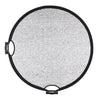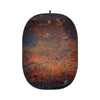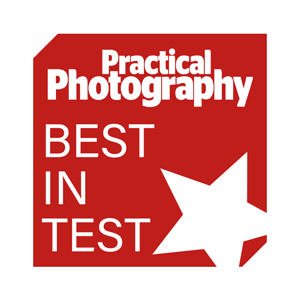The 5 Essential Photography Tips for Absolute Beginners
When a person decides to pursue photography, they often get overwhelmed by the various camera features and accessories they need to familiarise themselves with. As a result, they neglect one of the most important aspects of photography: the lighting.
Grasping lighting is slightly more complex than learning how to control your photography device. This is why it's essential for beginners to truly study photography lighting in detail before capturing images.
Here are a few photography tips for absolute beginners navigating lighting.
Learn How to Assess Your Environment
Do you know why professional photographers visit the photoshoot venue in advance? It's so that they can evaluate the setting they'll be conducting the photoshoot at and assess the type of lighting they'll need to use.
Before you start clicking photos, take a look around at your shoot location. What kinds of lights do you see around you? How would you describe them as? For instance, does the room you'll be shooting inside have incandescent lights or fluorescent ones? Are there any windows letting in natural light? If you're shooting outdoors, are there clouds in the sky that would affect your daylight intensity?
Each type of lighting has unique attributes that you need to take into consideration. The temperature, softness, and brightness of your light sources need to be evaluated before you begin to set up.
Understand the Importance of Lighting Setup
Whether you're shooting in natural lighting or artificial lighting, you need to understand the role of positioning your lighting equipment. Where you place your lighting source impacts the overall look of the final image you capture. You may also have to continuously move around your lighting equipment or your subject to achieve your desired results.
For example, the PiXAPRO 50x70cm rectangular Softbox can reduce the light intensity and create a more natural-looking light effect. It's also great for avoiding reflections and harsh shadows in the final image.
50x70cm (19.6"X27.5") Non-Recessed Rectangular Softbox - Mini Universal Fitting
The three most common techniques to remember include:
- Front Lighting: This is when you position the lighting source such that it's directly in front of the subject to help bring out details. It allows you to conceal any shadows in the final image.
- Side Lighting: This is when you place the light source to the subject's side, allowing the light to hit the subject sideways. It also enables you to create shadows and add depth to the final image.
- Back Lighting: In this, the lighting source is placed directly behind the subject to create dramatic images. However, you'll need to use modifiers to get details and avoid capturing silhouettes.
Familiarise Yourself with Modifiers
If there's one piece of equipment that beginner photographers should invest in, it's a light modifier. Light modifiers are devices used to improve the overall lighting in your images. They help photographers set the right mood by controlling ambient light, softening the lighting's harshness, and highlighting certain aspects of the subject or the background.
Modifiers come in several forms. You can use diffusers to distribute the light and prevent shadows. Reflectors can be used to introduce additional light in specific areas. Light shapers can help control the direction of the light. The more familiar you are with the different types of modifiers, the more control you'll have over your lighting.
Alternatively, the PiXAPRO Black/Silver Deep Parabolic reflective bounce umbrella can be used to prevent light dispersion. It comes with a 16-facetted parabolic design that gives you greater control over your lighting and allows you to capture crisp images.
For the budget-conscious photographer, the PiXAPRO collapsible 60cm 5-in-1 reflector is ideal for minimising contrast, softening light, and eliminating shadows. It's also perfect for illuminating any dark spots in your setup.
 |
 |
Begin by Shooting in Natural Lighting
For beginners, natural lighting is the best way to learn photography basics. Working with natural lighting eliminates the need to control or move around the light source during the shoot. It allows you to learn the lighting fundamentals such as filtering light, moving the subject, and experiment with varying natural lighting setups.
Of course, this doesn't mean that you can't use any additional lighting equipment. Using continuous lighting products in your natural lighting photoshoots can help you get excellent results. This form of lighting allows you to visualise exactly how your images would turn out and gives you the chance to adjust your lighting equipment accordingly well in advance.
For photographers just starting out, the DAYLiTE4 MKIII Single Head Unit is an economical continuous lighting product. It's energy-efficient and can last for up to 10,000 hours. You may use this to shoot portraits or conduct product photography.
If you have the budget for it, we also recommend the Glowpad series. This collection includes slim LED panels that can be used without softboxes or diffusers. Instead, you can use built-in diffusion mechanisms to soften the light.
 |
 |
Make Use of Flashes & Strobes When Needed
Once you've picked up the basics through natural lighting shoots, it's time to introduce flash lighting and strobes to your routine. Professional photographers use these products in natural and artificial light settings because they provide a steady and reliable light source.
Take the PIXAPRO LUMI II 200 flash (Godox Gemini GS200 II), for instance. This monolight strobe is a popular flash lighting product because it's extremely user-friendly, robust, and durable. The flash duration is up to 1/2000th of a second, which makes it perfect for sharp images with clear detailing.
 |
 |
LUMI200 200Ws Studio Flash Monolight and GIO1 Round-Head TTL Speedlite With Built-In 2.4GHz Receiver And High-Speed Sync (V1)
The PIXAPRO GIO1 TTL Compatible Speedlite (Godox's V1) is another great option. This speedlight produces a powerful light beam and has a high-capacity lithium-ion battery. With a flash duration of 1/20000th of a second, it's the ideal strobe for shooting moving subjects without creating blurred images. The short recycle time (< 1.5 seconds) also means that you can streamline your photoshoot and wrap up quickly.

















































































































































































































































































